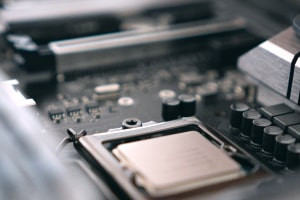This course introduces you to time and events measurements of embedded systems. It begins with an overview of TIMER_A, the primary timer module found in the MSP430 microcontrollers. With the MSP430G2553 as an example, we explain the primary components and sources of the timer. Then, with a practice sample code, you will run a program to illustrate what you can achieve with a timer. The four modes of a timer - Stop, Up, Continuous, and Up/Down - will be examined. We then discuss the various methods of generating pulse width modulation (PWM) signals, and the software and hardware approaches to generate analog voltages with PWM signals.
Next, learn to read external analog voltages with the analog to digital converter (ADC). The material highlights the sample and hold circuit and the encoding processes of the ADC. Examine the types of ADCs from the most common (the successive approximation register type ADC used by MSP430 microcontrollers) to the fastest (the flash type ADC). We demonstrate three sample codes on initializing ADCs in this section. Then, study how the microcontrollers can generate random numbers, which is a crucial aspect of embedded systems. A random number generator produces a sequence of numbers or symbols in a way that you cannot reasonably predict. You will investigate the two types of random number generators: the true hardware random number generators (HRNG) and the pseudo-random number generator (PRNG).
Furthermore, you will discover how a microcontroller can communicate by sending and serially receiving data using the various MSP430 communication protocol methods. We clarify the three such protocols available in MSP430 and their merits and demerits. Learn how to use a timer to capture internal and external events; this is called the MSP430 timer in a capture mode. We then further discuss the Timer_A Registers of the MSP430 microcontroller. We introduce the TA clock, an external pin of the MSP430. This pin will be clocking, incrementing, and setting the timer in a counter mode. Learning about the timer, event measurements, and MSP430 communication protocols will help you gain skills and understand most internal features of the MSP430 microcontroller.
What You Will Learn In This Free Course
View All Learning Outcomes View Less All Alison courses are free to enrol study and complete. To successfully complete this course and become an Alison Graduate, you need to achieve 80% or higher in each course assessment. Once you have completed this course, you have the option to acquire an official , which is a great way to share your achievement with the world.
Your Alison is:
- Ideal for sharing with potential employers
- Great for your CV, professional social media profiles and job applications.
- An indication of your commitment to continuously learn, upskill & achieve high results.
- An incentive for you to continue empowering yourself through lifelong learning.
Alison offers 3 types of s for completed courses:
- Digital : a downloadable in PDF format immediately available to you when you complete your purchase.
- : a physical version of your officially branded and security-marked , delivered directly to your address when you complete your purchase.
All s are available to purchase through the Alison Shop. For more information on purchasing Alison , please visit our FAQs. If you decide not to purchase your Alison , you can still demonstrate your achievement by sharing your Learner Record or Learner Achievement Verification, both of which are accessible from your Account Settings.














 Avg Hours
Avg Hours CPD Accredited
CPD Accredited
 Total XP:
Total XP: 
 Knowledge & Skills You Will Learn
Knowledge & Skills You Will Learn







